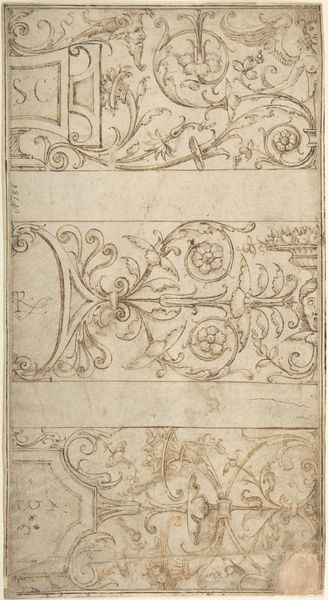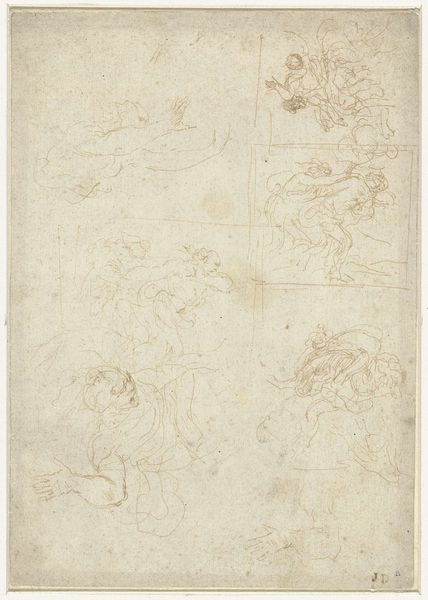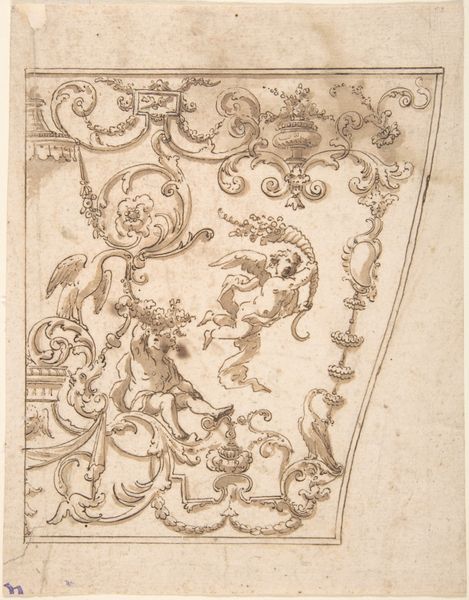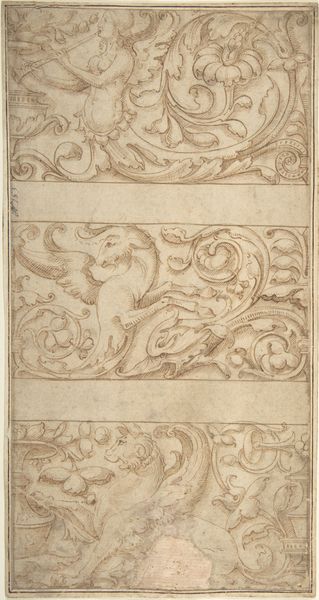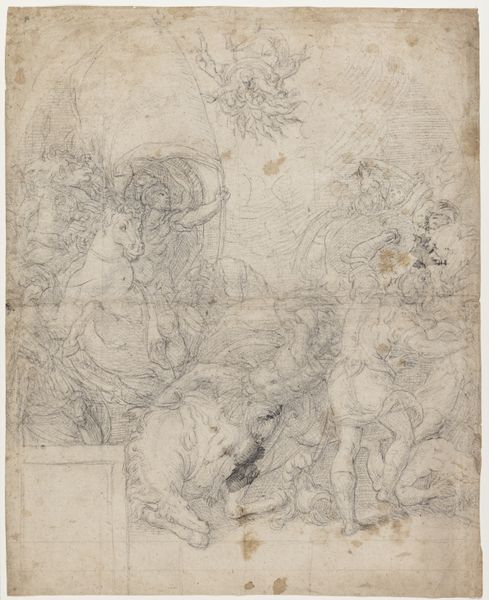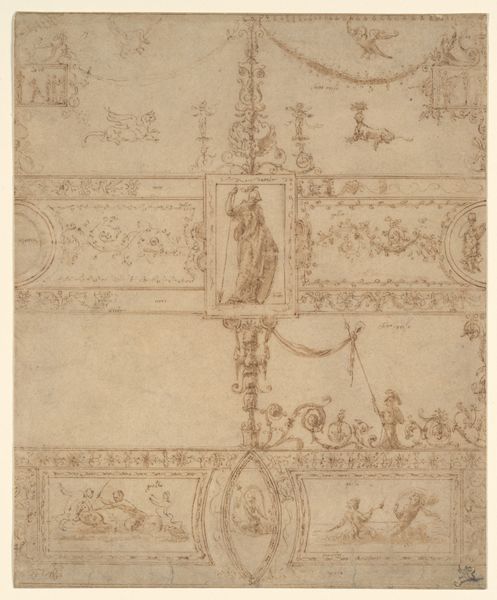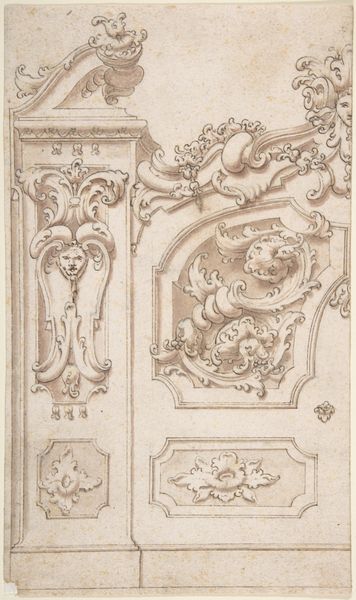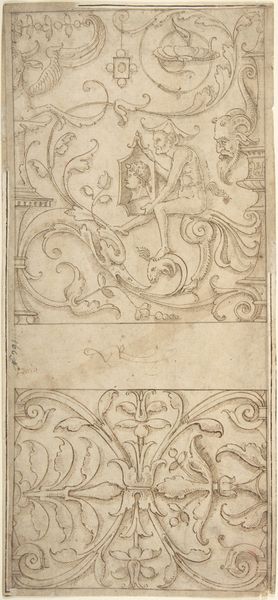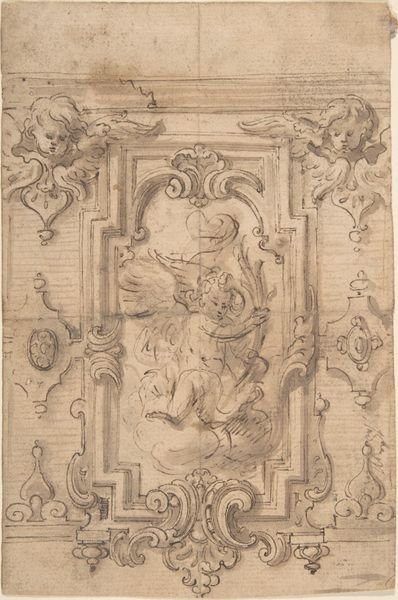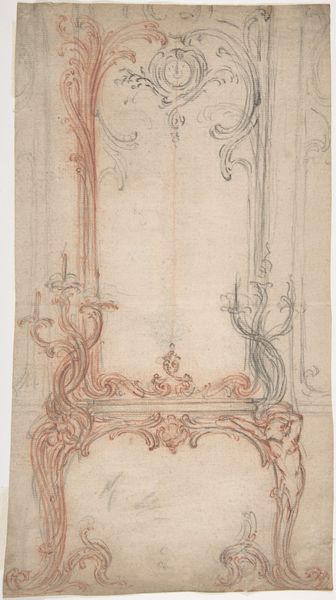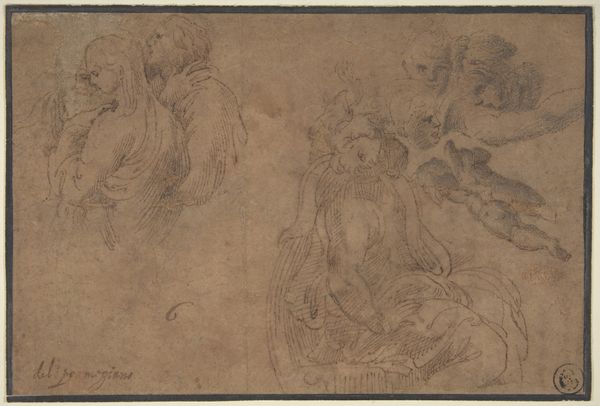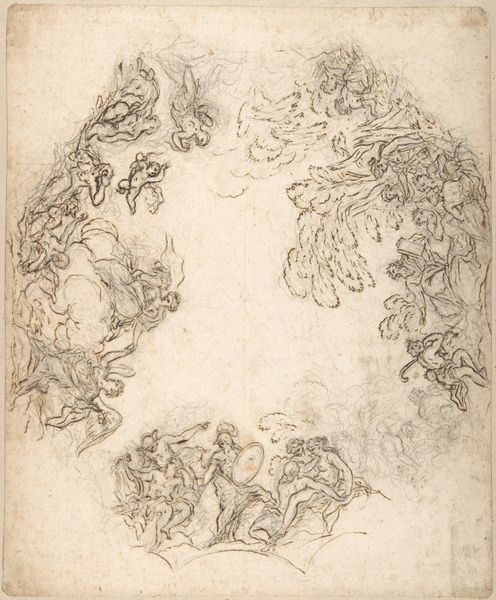
Sketchbook Sheet of Ornamental Studies, (recto and verso) 1487 - 1564
0:00
0:00
drawing, ornament, ink
#
drawing
#
ornament
#
ink painting
#
figuration
#
11_renaissance
#
ink
#
men
#
italian-renaissance
Dimensions: 12-5/8 x 8-7/8 in. (32.0 x 22.5 cm)
Copyright: Public Domain
Editor: This is "Sketchbook Sheet of Ornamental Studies," a drawing in ink by Giovanni da Udine, dating back to somewhere between 1487 and 1564. It’s housed at the Met. It feels almost like a botanical study mixed with fantasy figures, but somehow quite ordered. What social and political messages were embedded within these images? Curator: Well, this sheet really unlocks a window into the Renaissance workshop, a space that was deeply shaped by socio-political dynamics. Think about the patronage system – the Medicis, the Church – commissioning artists like Udine to create works steeped in symbolism and reflecting their power. Editor: Right, the power structures influencing the artist’s choices. How do you see that playing out here? Curator: Look closely at the ornamental details. They're not just decorative; they're often loaded with classical references, invoking a lineage of authority and sophistication that these patrons sought to associate themselves with. And the figures – the putti, for instance – they often serve as allegorical stand-ins for virtues or concepts valued by the elite. The use of "antique" motifs was also a way of legitimizing the patron's rule, presenting it as a natural continuation of a glorious past. Doesn't that idea tie into a particular societal attitude about gender or class at the time? Editor: Definitely! It's like they're constructing a narrative through visual language. All of this suggests how power isn't just imposed but actively crafted through art. It’s a fresh view on the piece, beyond just aesthetics. Curator: Exactly. And that’s why studying the context—the patrons, the artistic networks, the prevailing ideologies—is so crucial. Editor: So interesting to consider this interplay of decoration and social power; it changes the way I look at these sketches. Curator: Indeed! Thinking about those historical circumstances makes even the most minor ornamentation speak volumes.
Comments
No comments
Be the first to comment and join the conversation on the ultimate creative platform.
